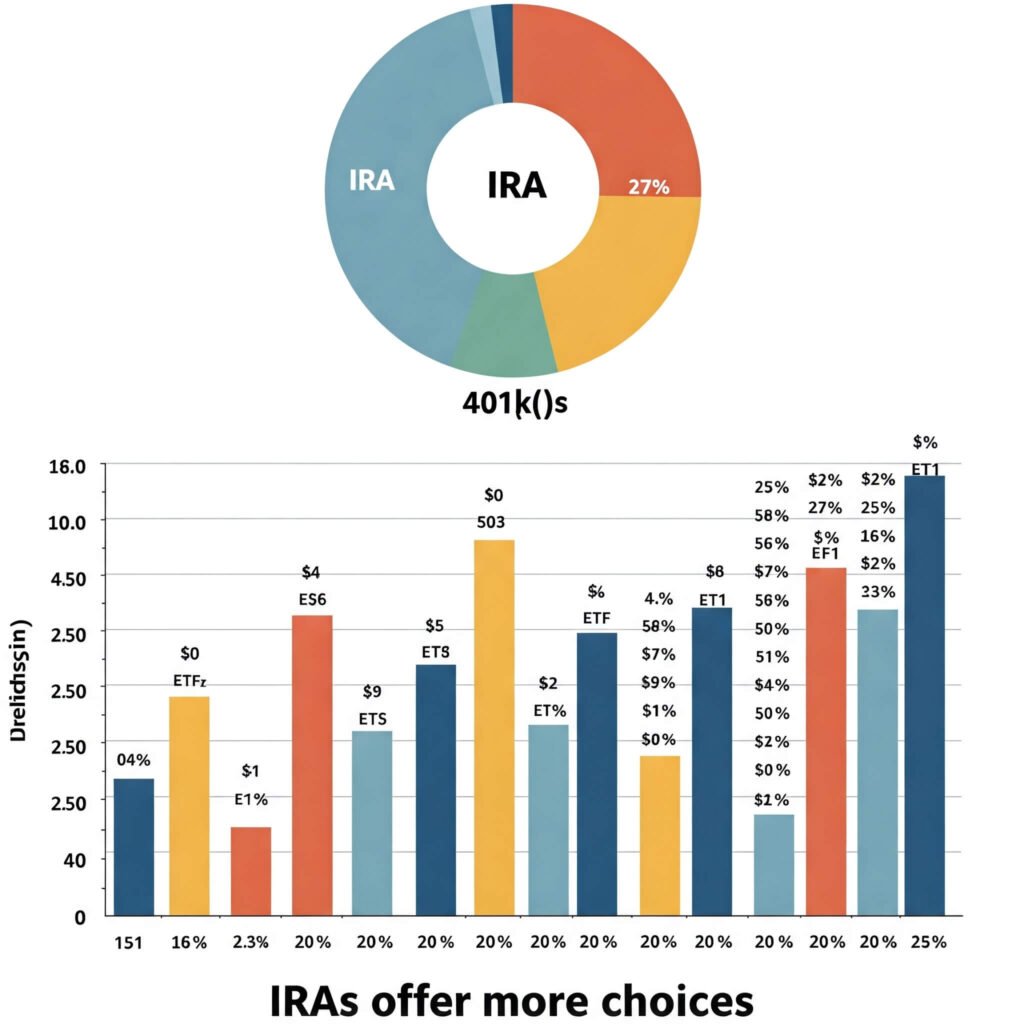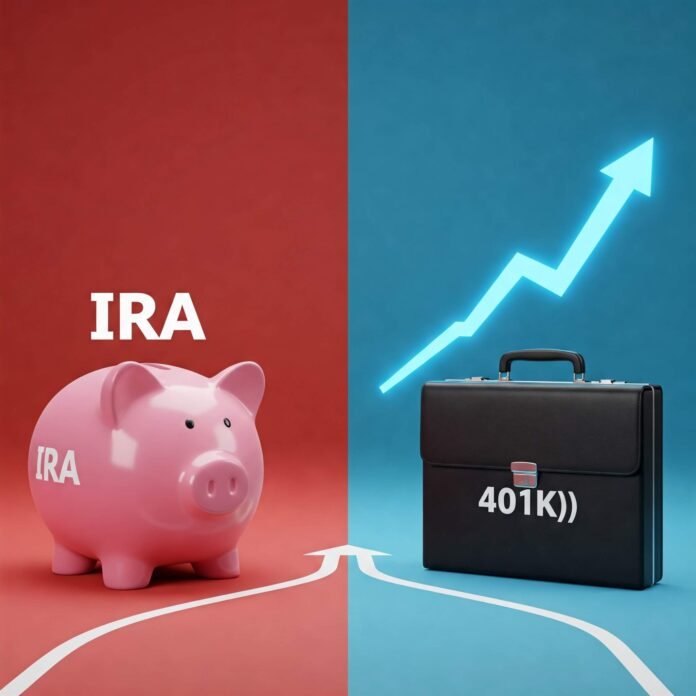Man, IRA vs 401(k) retirement planning is like choosing between two weirdly complicated coffee orders, sitting here in my cramped Chicago apartment on this chilly August 21, 2025, with a radiator clanking like it’s auditioning for a horror flick. Back in my early 20s, I was clueless, blowing my first paycheck on sneakers instead of saving. Got a job with a 401(k), ignored it. Then I opened an IRA, thinking I was a genius, only to screw it up with bad investments. Total rookie vibes. Let’s break down this IRA vs 401(k) retirement planning mess, with my dumb mistakes as your guide.
My First Stumble into IRA vs 401(k) Retirement Planning
Picture this: 2017, I’m in a sweaty Denver cubicle, new job, 401(k) offered. I signed up ‘cause my coworker was like, “Dude, free money!” Picked some funds blindly – oof, bad move. Lost a chunk in 2018’s market dip, felt like spilling my beer at a bar. Later, I opened a Roth IRA, thinking I’d outsmart taxes. Poured money into some sketchy stock a buddy hyped. Tanked. My desk’s still got that coffee ring from when I stress-drank. The IRS explains 401(k) and IRA basics clearly here.
401(k)s have employer matches – free cash. IRAs give you more investment control. I didn’t know crap then, but I’m learning.

The Big Differences in IRA vs 401(k) Retirement Planning
Okay, 401(k)s are work-sponsored, so you get that sweet employer match. My current gig in Chicago matches 5%, which got me like $3,000 extra last year. Nearly blew it when I cut contributions to fix my bike – dumb, especially with snow pelting my window. IRAs? You fund ‘em yourself, but you pick anything – stocks, bonds, even crypto. I tried a Roth IRA for tax-free withdrawals later, but I’m paranoid I’ll need the tax break now. Vanguard’s got a solid comparison here.
- 401(k)s: Higher contribution limits ($23,000 in 2025), but fewer investment choices.
- IRAs: Lower limit ($7,000), but you’re the boss of your investments.
- Roth versions: Pay taxes now, not later – I’m torn on this one.

Mistakes I Made in IRA vs 401(k) Retirement Planning
I’ve botched both. With my 401(k), I didn’t roll over an old account when I switched jobs. Fees ate it like termites. My IRA? I chased trendy stocks, lost a grand. Felt like tripping in public, face red, coffee spilling everywhere. Also, I didn’t realize 401(k) loans have risks – borrowed once for a “emergency” concert ticket. Missed growth hurts. NerdWallet’s got free advisor tips to avoid my dumb moves here.
Biggest contradiction? I tell everyone to save, but I skip contributions when life hits – like when my radiator broke last week. Still figuring this out.h to your 401(k) to get the employer match, then fund an IRA for additional savings and flexibility.

Wrapping Up My IRA vs 401(k) Retirement Planning Chaos
From my creaky Chicago apartment, IRA vs 401(k) retirement planning’s a messy choice, but both can save your butt. I’m no expert – clearly – but mixing a 401(k)’s match with an IRA’s flexibility works for me. Check your options, start small, don’t be me. What’s your plan? Hit the comments, I’m curious.
Outbound Link: Learn more about avoiding retirement planning mistakes at Investopedia.



